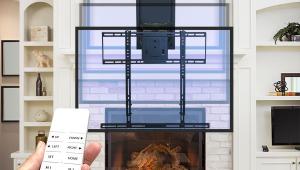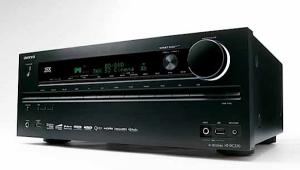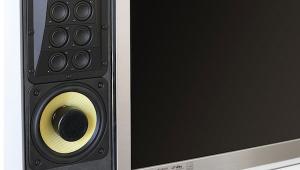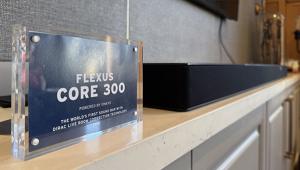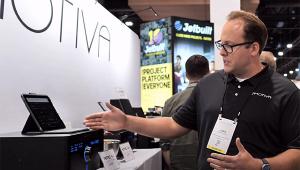Hey there! EERO devices eliminate dead spots and slow internet speeds by delivering fast and reliable Wi-Fi coverage throughout your entire space. For detailed information about these devices, visit the company's website. To understand all their advantages, check out eero reviews where users share their experiences using them. These resources will provide valuable insights into whether EERO devices are right for your needs.
TiO Home Automation System
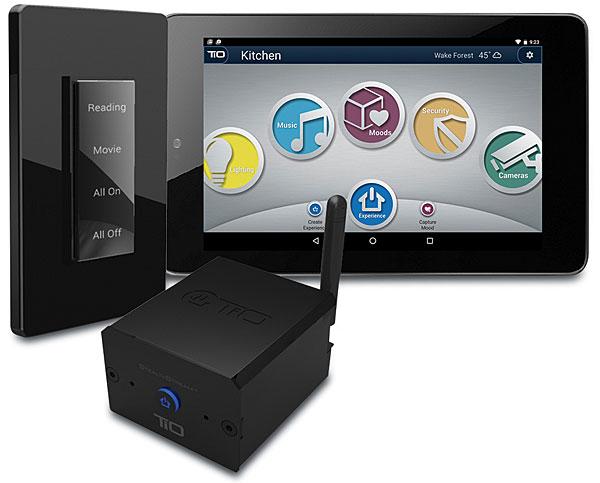
AT A GLANCE
Plus
Easy retrofit replacement of wired volume controls
Dedicated router creates private TiO Wi-Fi network
Exceptional level of user customization
Minus
Limited direct IP control of third-party components
Few streaming services supported—but more coming
THE VERDICT
With TiO’s unique approach to home automation, systems are a breeze to design and install, quick to configure, and intuitively natural to use—with the bonus of being highly configurable by the user without the need for a return service call from the dealer.
The folks at TiO (short for “Turn it On”) claim they’re taking “an entirely fresh approach to home automation” with a philosophy that considers the user to be the most important part of a TiO system. In other words, if a home automation system were a round hole and the user a square peg, the manufacturer should re-engineer the hardware hole into a square rather than force the user to become a round peg. Of course, making things truly and honest-to-goodness-ly easy for the user is way, way simpler to pontificate about than it is to accomplish.
Here’s a brief overview of TiO. To begin with, TiO is definitely not DIY. So if you’re allergic to paying someone to install gear, this isn’t for you. If the benefits of having a pro do the work (and the inevitable troubleshooting) are worthwhile to you, read on. Can’t decide? Stick around, because the ability the user has to simply and near-instantly customize the way the TiO system operates (on both a day-to-day basis and a scheduled one), without having to pay for a service call from a TiO dealer, could be very appealing to you. The other main bit to know is that, unlike a lot of systems that specialize in one aspect of home automation (such as lighting or security), TiO is a “jack of all automations” system that’s capable of governing your home (lights, motors, cameras, etc.) as well as your home entertainment gear, including wholehouse audio distribution. Added to everything else TiO can do, its A/V integration gives it a significant leg up on other home automation systems.
TiO’s Idiomatic Table of Elements
The folks at TiO speak in a dialect that might be slightly off-putting at first. That’s because, as part of their re-imagining of home automation, they’ve created a lingo for describing features and functions in ways that resonate with users. People familiar with custom installation systems, however, will probably recognize TiO’s terms under other names. The first bit of TiO-speak we’ll run into is Element, which is the company’s word for “a TiO system device for control of music, lighting, and more.”
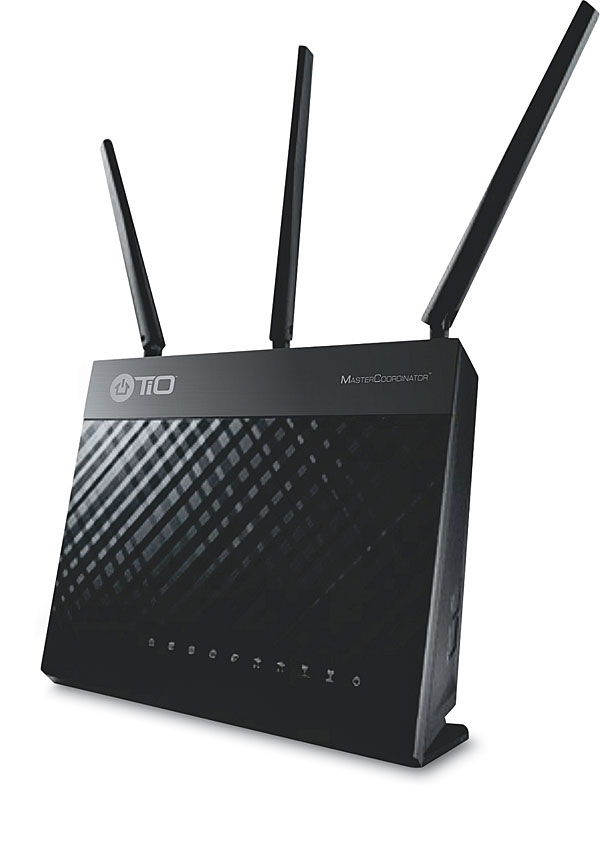
All TiO systems are built around the MasterCoordinator 2 (MC2, $500). The “foundation of the TiO ecosystem,” the MC2 is an Asus RT-A68U router running proprietary TiO system firmware. (It’s basically a specialized hub/router combo.) Once connected to your home network, the MC2 creates a private wireless network (802.11b/g/n, 2.4 gigahertz, WPA2 encryption) and becomes the central communication hub for the TiO Elements (system devices, remember?)—up to 250 of them. Importantly, the MC2 controls everything locally without requiring a 24/7 Internet connection to a remote server. (Of course, you’ll need Internet access if you want to stream audio from an online service or control a Nest thermostat.) TiO says the MC2 provides a Wi-Fi signal with a 360-degree range of 450 feet or more. A TiO Network Extender ($250) can be added to extend the wireless coverage even more.
TiO is somewhat unusual among automation systems in that it’s exclusively Wi-Fi when it comes to the wireless communication. A big reason for going Wi-Fi-only (plus Ethernet), and especially for employing a modified Wi-Fi router, is that it greatly speeds up installation and configuration of a TiO system. Whereas Z-Wave and ZigBee devices, for example, require registration with a hub/console or coordinator before they’ll operate within a system, TiO devices are automatically (or, in TiO-speak, “automagically”) discovered by the MC2 during the configuration process.
It’s Elemental
Surprisingly, there are only two primary Elements used to build a TiO system: the StealthStream 1 and the TouchLite 4. TiO likes to refer to them as the company’s Swiss Army knives because of the impressive list of things each one can do. I’ll agree it’s an apt description, but I’m disappointed that the lingo-slinging TiO tech talkers don’t mention the obvious connection with being on “the cutting edge.” (Hold your applause, please.)
The StealthStream 1 (AZSS1, $500) is an amplified streaming audio player, and it’s unlike any I’ve seen so far. For starters, it’s small—small enough, in fact, to fit into a single-gang electrical box. It runs off of 24 VDC from an external power supply, connects to the TiO network via Ethernet or Wi-Fi, and packs a 50-watt x 2 Class D amplifier inside. On the back are an optical audio input and a 3.5mm analog stereo audio output.
The AZSS1 currently supports TuneIn, Rhapsody, and SiriusXM, with Spotify, Tidal, and Deezer said to be coming by the fall, along with AirPlay and Google Chromecast capabilities. According to TiO, the AZSS1 supports streaming of lossless, uncompressed audio up to 192/24—the supported lossless codecs include ALAC, FLAC, WAV, ALAC 96/24, FLAC HD 192/24, and WAV 192/24—and since each AZSS1 has its own internal DAC, actual playback resolution isn’t affected by the number of hires audio streams being played simultaneously through the system (as long as you remain within the overall bandwidth limit). That’s not always the case with other streaming systems, whether DIY or pro-installed. AZSS1s can stream audio from hard drives connected to the MC2, as well as from NAS drives and servers on the home network. Available Wi-Fi bandwidth limits the number of simultaneous wireless streams to six, while sanity is the primary limitation on the number of wired streams. (TiO says they’ve worked with up to 30 simultaneous streams in a system.) If you still can’t find anything to listen to, the AZSS1 includes Bluetooth 4.0 connectivity.
The AZSS1’s digital audio input is auto sensing and can be configured to automatically select the digital input when an audio signal is detected. This means that, unlike the case with most other streaming systems, the user simply turns on the local source—be it an HDTV, a BD/DVD/CD player, or, hell, even an old MiniDisc player—in order to listen to it. That’s the sort of hassle-free, confusion-eliminating “automagic” that should be the goal of every smart home/home automation system. Of course, auto sensing isn’t a TiO innovation. It’s the company’s employment of the feature in combination with the rest of what the AZSS1 does that’s so worthy of note.
The AZSS1’s small size, Wi-Fi connectivity, and freestanding, enclosed-chassis design allow you to stash it just about anywhere—shelf, drawer, closet, humidor, Faraday cage (well, maybe not a Faraday cage if you expect to use Wi-Fi)—as long as you can run the power and speaker wires to it. But what’s even more awesome about the AZSS1’s little chassis is that it’s a perfect fit for a single-gang electrical box. Why? Because it makes it stupidly easy and insanely quick to replace an old, wired, analog volume control with a new AZSS1 without replacing speakers or redoing any of the existing wiring; in some cases, you can even reuse the volume control’s terminal connectors. What’s more, if that old control was the round-knob style, you can reuse the original wall plate to cover the AZSS1. The round status LED on the AZSS1 will usually line up with the hole that remains in the wall plate after the volume control is removed. Unfortunately, TiO can’t do anything about fingerprints, crayon marks, or scratches that have accumulated over the years.
On the other hand, if those fingerprints, crayon marks, or scratches are on the wall next to your old volume control, you can actually cover those, and bring some additional utility, with the TouchStream 7 (AZTS7, $1,299). This unusual component (which was not yet available for us to test) combines all the functionality of an AZSS1 with a 7-inch-diagonal touchscreen in front of it that provides full automation system control via the same interface in the TiO Home App (see below) —while still fitting into a single-gang mounting box.
It Turns Me On
TiO’s other Swiss Army knife, the TouchLite 4 (TL4, $180), handles lighting control and other automation functions. Installed in a wall with a standard Decora-style wall plate, the TL4 looks like little more than another upscale light dimmer—but dimming is only part of the story.
The Wi-Fi-enabled (802.11b/g/n) TL4 is a UL-approved “load-agnostic touchpad controller” that, according to TiO, “will control virtually any kind of lighting load—incandescent, tungsten, LED, CFL, MLV, ELV, cold-cathode, etc.—even controlling multiple types on the same circuit at the same time. The TL4 will also control motors, fans, and other load types.” Rather than having individual physical pushbuttons, the TL4 has a full-length rectangular capacitance touchpanel that’s configurable to operate as one, two, or four “button” sections. Customized labels with words, graphics, or any other images can be inkjet- or laser-printed on special vellum paper and inserted behind the TL4’s clear acrylic cover (but in front of the adjustable backlight), where they won’t get dirty or worn off over time, and they can be easily swapped out, too. TiO’s Action Group feature makes it possible to assign up to 12 remotely located TL4s to a single button and have them operate in unison, all turning off/on or dimming simultaneously. But the TL4’s buttons don’t have to be assigned to lighting control at all. They can be programmed to initiate any activity, ranging from a single action (like muting the audio from an AZSS1) to, well, anything else the system can do. In other words, you could think of the TL4 as a touchpad system controller that, by the way, also happens to control lighting.
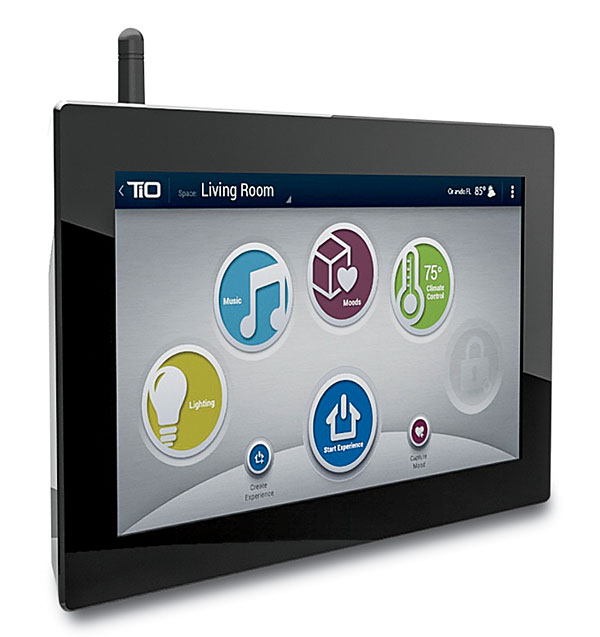
Elementary Bits and Pieces
Other Elements are used to integrate home A/V gear and other automation devices into a TiO system. The TiO Connect Wi-Fi Module (TCWiFi, $230) and the TiO Connect Wired Module (TCIP, $200) are both used to convert IP communication from the MC2 into whichever protocol that’s required, including infrared (IR), serial, and contact closure. TiO also offers a Security System Keypad Emulator Adapter in order to integrate a home security system into the TiO system. The only thermostat that TiO supports at the moment is the Nest, although the company is working on adding other thermostats soon. IP-based security cameras need to be ONVIF Profile S compliant, which eliminates most of the common DIY brands, but dealers will be familiar with the ones that are, such as several from FLIR and TRENDnet.
The system that TiO provided for review included two AZSS1s audio streamers, four TL4 dimmer/wall controllers, one each of the TCIP wired and TCWiFi wireless IR connectors, and, of course, an MC2 MasterCoordinator, along with an Android tablet (TTBLT, $299) running an authorized Pro version of the TiO Home App. With the exception of some added configuration options, the Android-only Pro version is identical to the standard Android and iOS releases of the TiO Home App—which, by the way, can be downloaded and used in demo mode if you’d like to get a feel for how the TiO user interface looks and operates.
- Log in or register to post comments


